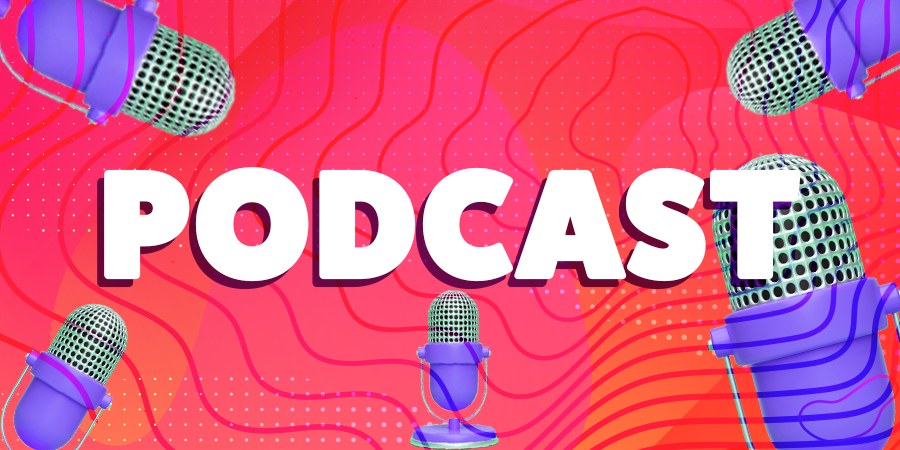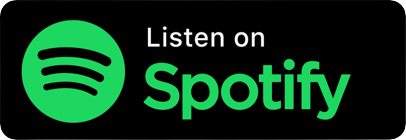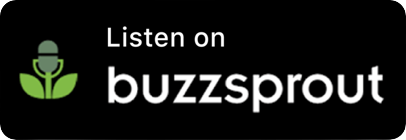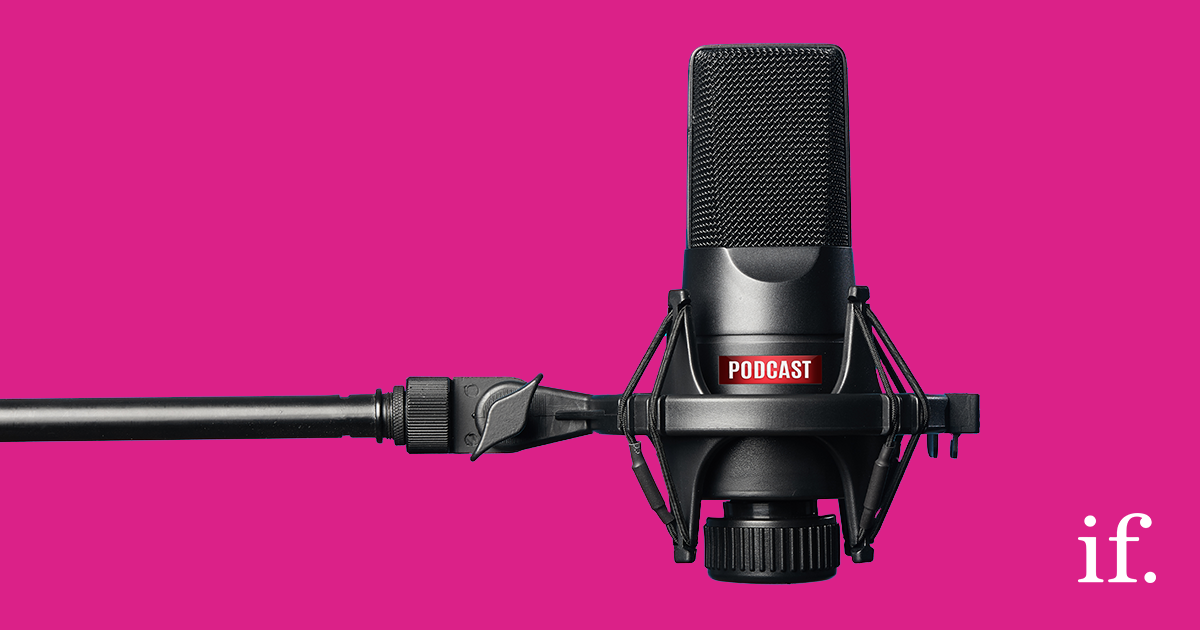Ep 54: Serious Social – Stop whispering into the void
The way brands interact with their audiences on social media has noticeably changed. Consumers are demanding more and will no longer put up with a lack of response or engagement from brands. Whether you’re scaling up your organisation or team, or just shoring up your processes, then tune in to Serious Social live this week with Belle Lawrence, and gain practical advice about engaging well on social.
If you’re after more know-how to break the social boring, subscribe now.
Full Transcript
Hello, and welcome to Serious Social live. In today’s session, I’m going to be talking about how brands can engage well on social. A year ago, I ran a Serious Social live where I talked about the fact that we were all having to live more digital lives. So being stuck indoors or at the very least having some restrictions placed on us meant we were all spending loads more time on social and just online in general. And when we start interacting with brands online, a little bit more, they have had to adapt a lot, and fast.
Over the last 18 months, a lot has changed. And as we go forward into a place where maybe there is a bit more freedom and we can go outside more and that kind of thing, and that’s great, but consumers/ audiences are still going to have those high expectations of brands to communicate well with them online when they do have a query or a challenge or a problem. There is no doubt that the way that brands have had to adapt, it’s been huge. It’s been seismic. They can’t afford to go back to being non-responsive or having faceless tech or bad chatbots. It’s just not going to cut it.
With the audiences these days, to be honest, many brands have had to go through a huge digital transformation. Some have just had to upgrade their systems. We’ve had display staff all over the place, and we’ve all seen those adverts with the banking staff working at home. So, we know that there are humans behind these brands. We know that there are people, and yet sometimes we experience a really poor level of customer service or no response at all. And that can really create a bad perception for a brand.
I mean, I’m sure a lot of us, If I’m talking to marketers, which I’m sure I am, I’ve seen the odd Tweet, or the customer service problem gone wrong that can really create a problem in the long term for a brand. So, in today’s session I’m going to talk about how to avoid some of that, and how we can better communicate with our audiences and put a human face on the brand, or just be more human, as quite a trend at the moment. But I think really as a user, as a sort of part of the consumer universe myself, I certainly want brands to be more human because I know there’s someone behind it.
So as with most of Serious Social’s, well certainly mine, I’ll be talking about planning and preparation because you can never plan too much with social. I know it may seem to some that, you know, we can fire off a quick tweet or just a post saying ‘yes, happy to help’. But actually, when it comes to customer service or engagement, well, you do want to be prepared. We want to understand how to communicate with people so what we tend to do is we’ll start off with the brand positioning. And if that doesn’t necessarily exist on social, we’ll look at how we can create that because it is important.
Brands can interact very differently on social then they may be able to offer a press piece or something maybe that they’re speaking about on TV. It is a different mindset of course, it’s a conversation. Basically, socially as a bunch of humans having a chat or be online. So, there are ways that browser can communicate better or worse. So, we’ll look at the positioning of it.
We will look at 8 to 10 things today that you can practically consider for your brand to improve things. So, the values of the business and what they stand for. If there’s a potential for any controversial topics, either driven by the brand themselves that they want to talk about or something that may come up as controversial because of a piece of news or a change in legislation or whatever happens to be, you need to be prepared.
So, we’ll always look at, what does the brand stand for? What do they believe in and how can we back that message up? Is there an internal program to look at diversity for argument’s sake? Or is there another way that we can create values that mean something to the audience and that can communicate clearly what we care about and that we do care as a brand? So, you need to start off by thinking about that a little bit.
And we’ll also look at tone of voice and how it can be consistent across the channels. So, tone of voice is an interesting one because you do need to be professional, particularly when dealing with a difficult situation, but you also want to be human. So, we’ll look at how to convey that tone of voice. Well, be it the words that we use, the phrasing, whatever it happens to be, we might like ourselves to a celebrity or comedian or something like that as a brand to try and pull out that human side. And how can we be consistent? Well, this is about an audience or an audience member or somebody in your audience, may want to communicate with you differently on a different channel. They might prefer to communicate on Instagram. They might be more of a lover of LinkedIn, but on every channel, they need to get the same consistent message back. If they happen to message you on Twitter one day and Instagram, the next, it can’t be completely different how you go about solving their problems. So, there is a consistency, although you may change your tone of voice, according to the channel, maybe you’ll be a little bit more open and friendly and chatty on Twitter than you would be on LinkedIn, for example. So, you need to think about that, work through the channel strategy and figure that out.
And you also need to do the internal work in your organisation. And this came up on our webinar yesterday, which was all about customer experience on social. We’ll be releasing that over the coming days, the edited version, so watch out for it on our channels. But what we were talking about there is that it can have a lot to do with culture. Huge organisations that maybe don’t have the culture of being able to connect right at different functions. So, marketing and sales or marketing customer service, social media teams, that can be a real challenge then to align on what you believe. You should be saying what the customers need to know. And even just having an understanding of frequently asked questions that the customer service team may be taking calls about can really help your social content. So, try and make that work internally. It may take time, it may take a lot of effort, but it’s absolutely worth it in the end.
I’ve just mentioned FAQ’s then, obviously one of the things that you can do is to stop people having to ask you the question on social. So, if there are a number of frequently asked questions, you can post on your website or as a pin post on social or create some content around it that will really help you. It will cut down on the number of enquiries. It will speed things up for you. You can direct people to that frequently asked questions page, for example. So, go through the motions of that, is that’s kind of a quick win.
Really, another quick win is to set expectations. So, the number of brands I’ve seen that don’t set these expectations is kind of crazy. Because it’s really easy to put the time that you’ll be online or that you’ll be available for questions into your profile bio in some way – be it a pin post or whatever it happens to be, to say we’re online between 9 and 5, at least that sets the expectations, and your audience are less likely to be frustrated if they don’t get a response or it takes time to come back to them. So that’s a really quick win.
The next one, probably not so quick, probably thinking about the framework of responses is something that brands will find challenging. So, you can’t always stick to a script. So, this isn’t about saying, if we’re asked this, we respond with this and not kind of being movable about that. It’s about understanding what the question might be and how you can solve it in a number of ways. It goes back to tone of voice. So which words are we going to use and how are we going to respond? And by all means, if you’re creating this framework, put together some examples of how you might respond or workshop it through with your team, but then empower them, because if you’ve hired someone who is the right person to front, the social media discussion or conversation with anyone who enquires, and they know what they’re doing, then empower them to do that, allow them to be human because they have the confidence. Once you’ve put together this framework and they’ll be able to do it. So, that’s definitely one to look at.
Within the frameworks, you’ll definitely have to look at potential negativity and escalation. So, this is always a challenging topic for brands because no one wants to expect negativity, but it can happen whether it is something like legislation changing or a piece of news, or whether it’s something that’s driven by a customer problem that you weren’t originally aware of. It’s a really good idea to take some time, sit down, maybe get someone outside the business or the team to come in and play devil’s advocate and who can consistently ask you, but why, but how, that kind of five-year-old questioning that we’re all sort of trying to find the reasons that a brand is behaving in a certain way. And then work out what the worst-case scenarios are. What’s the absolute worst that can happen or someone that can ask you? And how you’re going to deal with that as a team? Does it need escalation to a director or a lawyer? Or what’s it going to need and how are you going to go about that? Will be an email? Will you need to put a mobile number as kind of emergency contact for weekend or evenings or something like that? Try and work through all of those points because you’ll feel better about it.
If you’re over prepared, you can’t miss a trick. I mean, obviously you could, because sometimes things just come up and you have to figure out how to deal with them, but the more preparation you’ve done, the better equipped you are, and your team are, to deal with it. So definitely go and do some escalation planning or some negativity planning.
Another part of the mix is influencers and advocates. Now, when I’m talking about negativity, we may be talking about detractors to the brand people who really don’t like what the brand does or have a certain problem. And, they’re constantly trolling or constantly messaging to say, you guys are bad. And that’s one thing, one consideration that you might need to think about when it comes to the framework. But the other consideration is people who love the brand. And sometimes those are internal, there may be members of staff, sometimes they’re external, who just happened to have had a great experience and they’re evangelical about it and want to shout about it all over the place.
And then there’s also that level of people who you might want to work with as influencers or applicants, and you want to try and engage with them. So, if we take the ones that may approach you and say, ‘I really love your brand. I want to work with you’, consider some kind of scoring that you can do to look at how many followers they might have, what kind of content they’re producing, whether or not their values fit with your values and come up with a little system that you can check that through. And if you want to make an approach to do some outreach to somebody that you’ve identified that you think will fit, then plan that program in advance and think about what is the content and the values and what do you want from them. And also, how can you make them feel valued? Because yes, in this kind of influencer culture, a lot of it can come down to ‘pay me some money, I’ll create your video’. Right, but it should be more than that. If you really want a brand advocate, it should be more of a relationship. And if they love the brand, they want to work with the brand. Then how can you make them feel valued beyond just paying them for their time or their content? It could be free tickets to something, or it could be, you know, just a conversation or helping them out along the way, paying it forward in some way.
So, consider how you can build that relationship. And then when you’re in a program, in an influencer program, during that program, you have to continue to build it again, show the value. You obviously have to do the tick boxes, making sure that all their contacts are up to date. You’ve got their mobile number. You’ve got all of the profile links arrive, and you’ve got to set about putting in the advertising codes that you need to put in making sure that you’re putting ad or you’re making sure that you’re using the Facebook platform that allows you to put paid partnership and that kind of tool in so that you don’t fall foul of any code violations.
So, that’s definitely worth thinking through. And then there’s employee advocates. Now this is a really interesting one because a lot of brands will have quite stringent social media policies that they might get people to sign as they come into the business or they’ll go kind of hell for leather because brands might get scared and then employees ask, ‘can I say something? Am I allowed to talk about this? Can I talk about my job?’ And they don’t know. So, it’s worth thinking about maybe who you want to engage on an employee advocacy program or whether you can be a bit more open and again, allow them, empower them to talk about the brand in a positive way. There is the old adage, of course, people buy people. So why not think about the fact that your brand page on LinkedIn might not be the only way that people are going to find you or decide to work with you. It’s really important to allow those advocates in your business and your organisation to have their voice. And it could be a structured program. It could be creating videos, putting a face to the brand behind the scenes, whatever it happens to be. And that’s great, but it can also be much smaller, more organic than that. And also, that can be more authentic. So, again, putting a framework in place, putting some policies together that say, listen, guys, we’d love you to talk about it. Maybe don’t say this or that or whatever guidance you need to give, will give them the confidence to go out and do it.
So, what have we covered? You need to have a look at your values of your business and make sure that you know, where you stand on topics, you need to consider your tone of voice and how to be consistent across the channels, but maybe changing your tone of voice a little. You need to align internally as much as you can. Obviously, it comes around culture of the business, but as much as you can and go in and build that relationship internally. Create the FAQ’s and set expectations around the time that you’ll be online, that will make your audience much happier. Think about your frameworks of response, but don’t be too scripted, and then think about some worst-case planning and the escalation, what you’re going to do about that. And then obviously the influence and advocates piece as well is really important to consider.
So that’s kind of 8 to 10 things, work through them and you’ll be better prepared. It’s always the case. If you do the planning, you’ll be better prepared. Anyone who knows me or has watched any of these before will know that I’m all about the planning. So, get on board with that, do those few things, and hopefully you’ll be set up for success on social.
So that’s it for me today. Thanks so much for tuning in. I’ve had some lovely comments come through, so thanks everybody. And as ever, you can go and watch our previous Serious Social lives and the edited version of this with subtitles on YouTube or Facebook, you can also listen to us as a podcast, it’s called Serious Social live, and you can go and find that on Apple or Spotify podcasts or many other channels as well. We do also produce a blog if you prefer written content. So, hop on our website, immediate future.co.uk. That’s it for me this week. We’ll be back next week with another Serious Social live, which I believe will be CJ. So, tune in then, and we’ll see you then.




